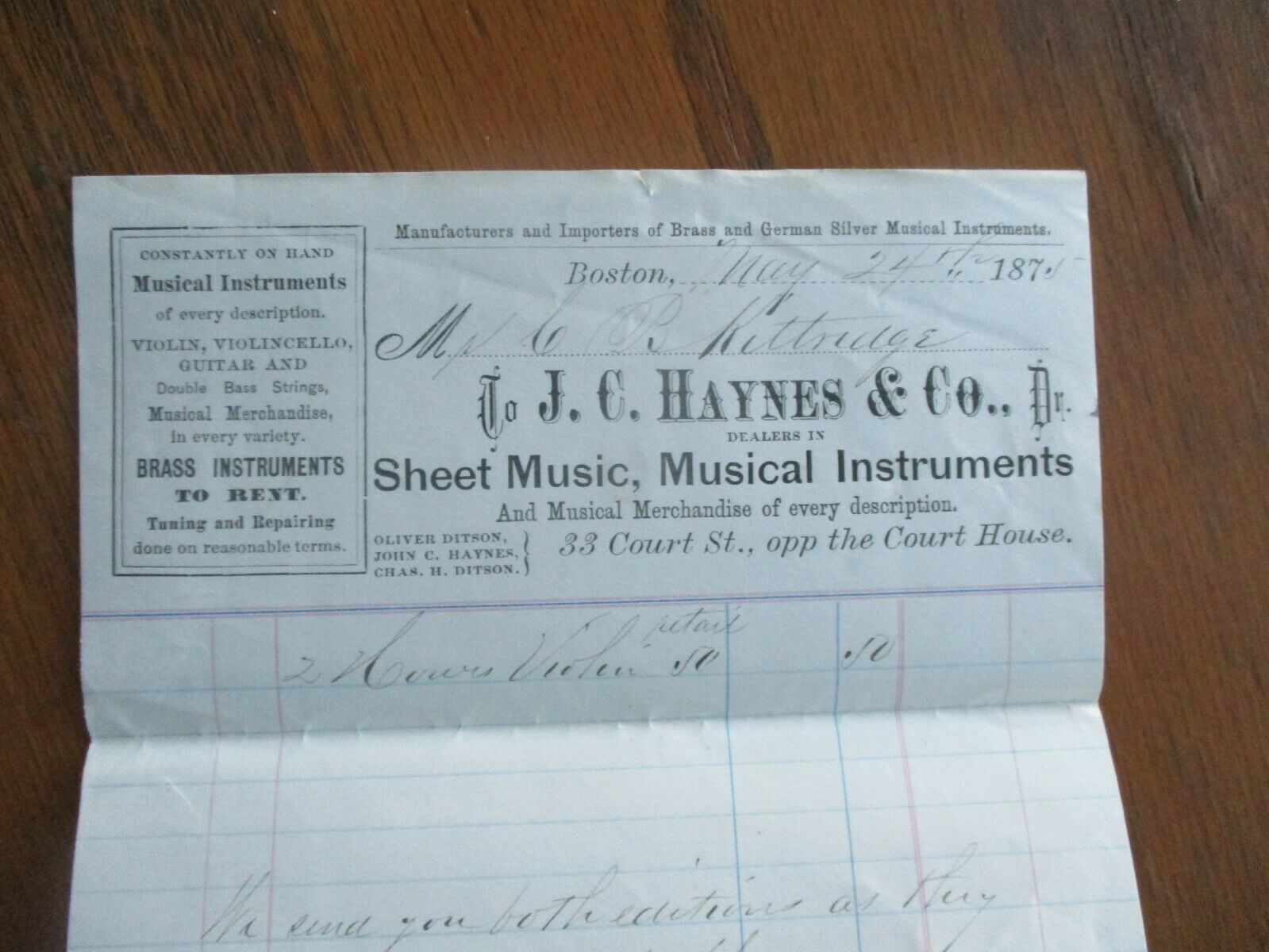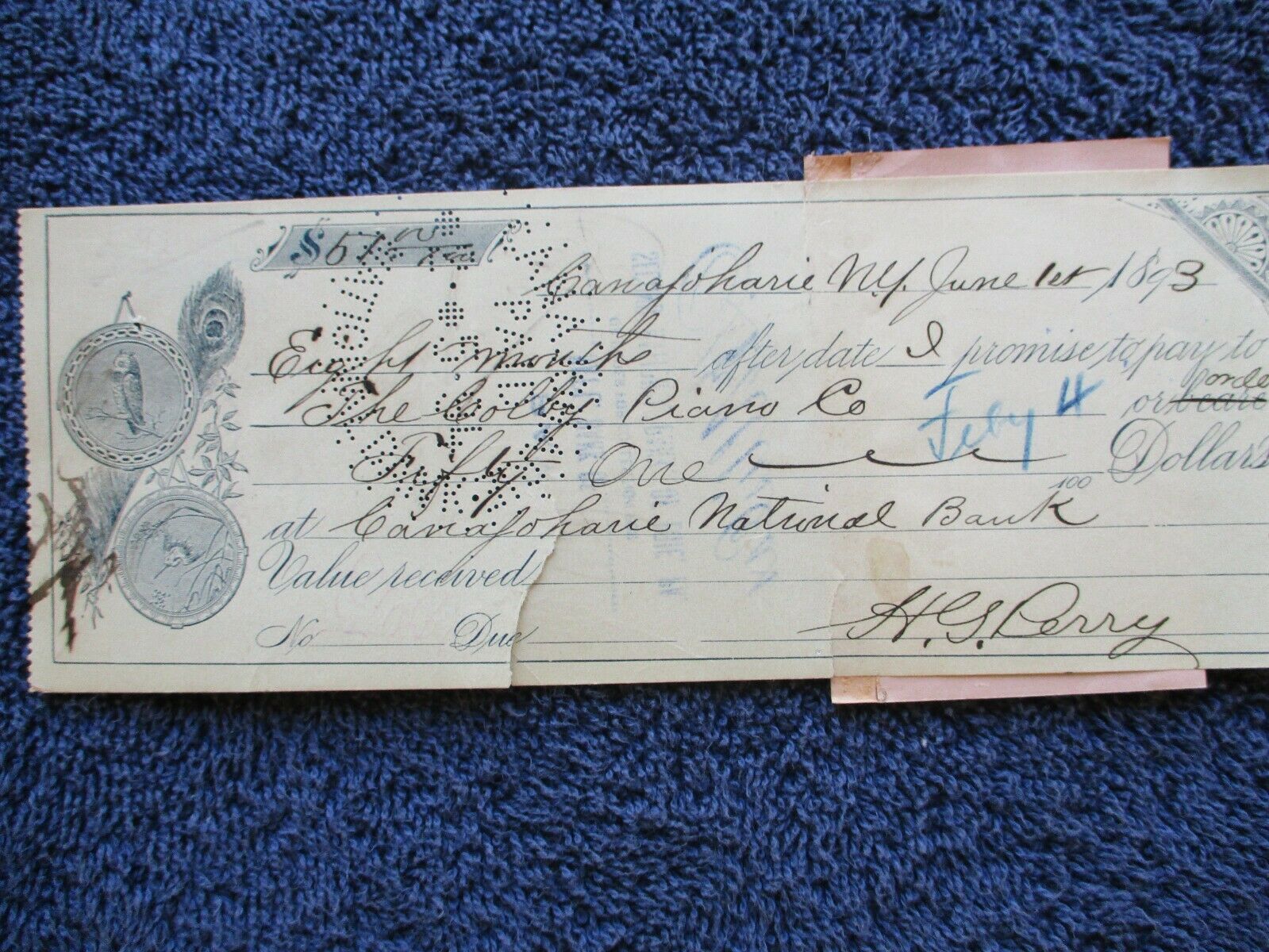-40%
C.G. Conn Band Instruments Elkhart Map Wonder Factory Music Victorian Trade Card
$ 52
- Description
- Size Guide
Description
C.G. ConnElkhart, Ind. - Wonder Band Instruments "Put Elkhart on the Map."
Antique Music / Brass, Bugle, Drum etc. Band -related Business Advertising Trade Card
Caption
:
"The latest illustration of the New Wonder Factory... where the Best Instruments...
.
To See More
Band / Piano / Strings
etc. Cards Click Here:
(( MORE MUSIC CARDS ))
Antique Music, Dance, Entertainment, Stage, Instrument -related Business Advertising Card
+ Over 1,000+ more fabulous antique cards are currently listed at the Dave Cheadle Card Store
.
NOTE
: from Wikipedia - C.G. Conn Instruments
...
... C.G. Conn Ltd., sometimes called Conn Instruments or commonly just Conn, was a United States manufacturer of musical instruments, especially brass instruments.
The company was founded by Charles Gerard Conn In 1850 he accompanied his family to Three Rivers, Michigan and in the following year to Elkhart, Indiana. Little is known about his early life, other than that he learned to play the cornet. With the outbreak of the American Civil War he enlisted in the army on 18 May 1861 at the age of seventeen, despite his parents' protests. On 14 June 1861 he became a private in Company B, 15th Regiment Indiana Infantry, and shortly afterwards was assigned to a regimental band. When his enlistment expired he returned to Elkhart, but re-enlisted on 12 December 1863 at Niles, Michigan in Company G, 1st Michigan Sharpshooters. At the age of nineteen on 8 August 1863 he was elevated to the rank of Captain. During the Assault on Petersburg on 30 July 1864, Conn was wounded and taken prisoner. In spite of two imaginative and valiant attempts to escape, he was recaptured and spent the remainder of the war in captivity. He was honorably discharged on 28 July 1865.
After the war, Conn returned to Elkhart and established a grocery and baking business. He also played cornet in the local community band. Conn's entrance into the musical instrument manufacturing business was the result of a split lip. There are three existing stories of how this occurred, but the popularly accepted version is that Del Crampton slugged him in the mouth outside a saloon where both of them had been drinking. Conn's upper lip was severely lacerated, and it pained him so to play his cornet that he thought his playing days were over. In addition to running his store, Conn also made rubber stamps and re-plated silverware. He decided to try adhering rubber stamp material to the rim of a mouthpiece which he hoped would conform to his lips. After he showed his friends his idea, he realized that there was tremendous demand for his invention. Conn then began to contemplate manufacturing his new mouthpiece. He needed a rim with a groove which the rubber cement would adhere to more easily. It was in 1874 when Conn converted a discarded sewing machine frame into a simple lathe and started to turn out his mouthpieces and was soon in full production (Subsequently Conn and Del Crampton became best of friends, and when Conn embarked on his political career, he was a staunch advocate of temperance).
Conn patented his rubber-rimmed mouthpiece in 1875 (with patents to follow through 1877) described as "an elastic face [i.e., a rubber rim] where the mouthpiece comes in contact with the lips, the object being to prevent fatigue and injury to the lips." About this time Conn met Eugene Victor Baptiste Dupont (b. Paris ?May 1832; d. Washington, D.C. 26 July 1881), a brass instrument maker and designer and a former employee of Henry Distin of London. In January 1876, Conn joined with Dupont under the name of Conn & Dupont, and Dupont created Conn's first instrument, the Four-in-One cornet, with crooks allowing the horn to be played in the keys of E♭, C, B♭, and A. By 1877 Conn's business had outgrown the back of his grocery store, and he purchased an idle factory building on the corner of Elkhart Avenue and East Jackson. Conn's partnership with Dupont was dissolved by March 1879, but he was successful in attracting skilled craftsmen from Europe to his factory, and in this manner he expanded his operation so that by 1905, Conn had the world's largest musical instrument factory producing a full line of wind instruments, strings, percussion, and a portable organ. Conn partnered with Albert T. Armstrong, Joseph Jones, and Emory Foster to manufacture a twin-horn disc phonograph called the 'Double-Bell Wonder' that was produced in two iterations briefly in early 1898 before a lawsuit by the Berliner Gramophone Company caused production to cease. Brick-red 'Wonder' records were also pressed for the 'Double-Bell Wonder' talking machine by the Scranton Button Works from pirated Berliner masters. Fewer than fifty 'Double-Bell Wonders' were produced of both iterations combined.
Conn's first factory was destroyed by fire 29 January 1883 (his thirty-ninth birthday), and he erected a new building on the same site. In 1886 rumors began to circulate that Conn wanted to move his business to Massachusetts. Conn was induced to stay after the public raised a large sum of money by popular subscription and gave it to him. In 1887 Conn purchased Isaac Fiske's brass instrument manufactory (upon Fiske's retirement) in Worcester, Massachusetts. Fiske's operation was considered to be the best in its time. Conn operated it as a company subsidiary, and in this way he achieved his objectives. The company's product line now centered around the 'Wonder' cornet, but in 1885 Conn began importing French clarinets and flutes. Conn claims to have introduced the first American-made saxophone in 1888, designed by the French-born E.A. Lefebre, well known soloist with both Patrick Gilmore's and John Philip Sousa's bands. Conn's instruments were endorsed by several leading band directors, including Sousa. In 1898, upon the suggestion of Sousa, Conn developed the first commercially successful bell-up sousaphone ("the rain-catcher"). Conn phased out the Worcester operation (production was ceased in 1898), and Conn established a store in New York City (1897–1902) which a large variety of merchandise was sold under the 'Wonder' label, which included Conn-made woodwind, brass and percussion instruments, violins, mandolins and portable reed organs. The business also distributed American-made and imported guitars, banjos and zithers.
For More 19th Century
- Nationalism / Exposition / etc.-
Click:
(( MORE PATRIOTIC CARDS ))
T













